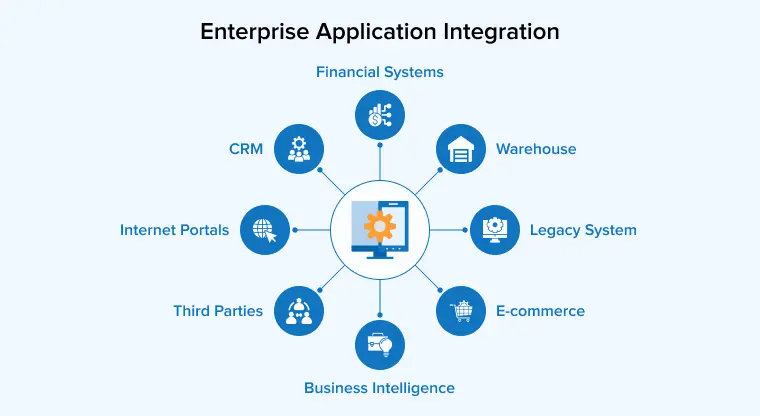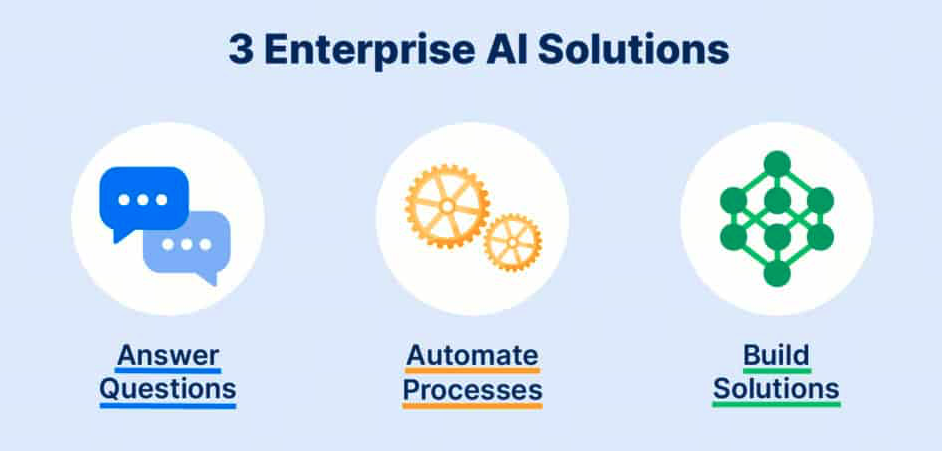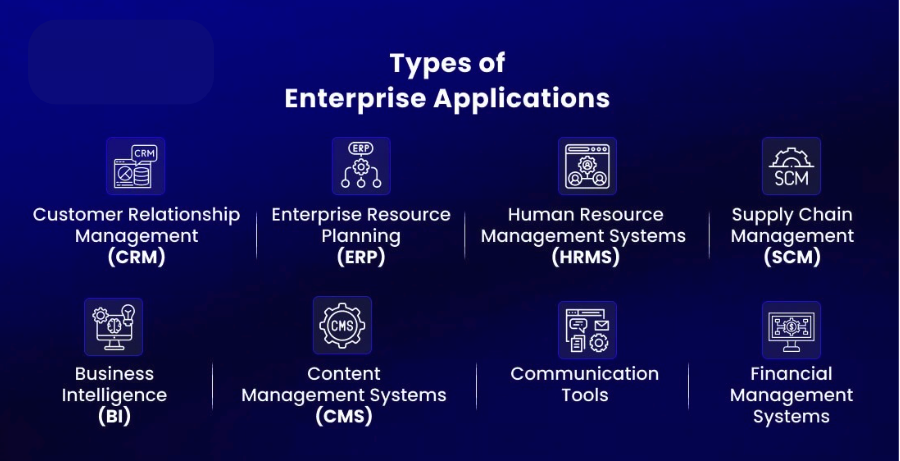
What is Enterprise Application Integration (EAI)?
Enterprise Application Integration (EAI) is the process of linking different software applications within an organization to enable smooth data exchange and workflow automation. Instead of operating in silos, EAI ensures that all business systems—such as CRM, ERP, HR, and finance software—communicate efficiently.
Key Components of EAI
| Component | Function |
|---|---|
| Data Integration | Unifies data from different sources for consistency and accuracy. |
| Application Interface | Connects various applications via APIs or middleware. |
| Process Automation | Streamlines business operations by automating repetitive tasks. |
| Message Brokers | Facilitates real-time data exchange between systems. |
| Security & Compliance | Ensures secure data transmission and regulatory compliance. |
Why is Enterprise Integration Important?
The importance of EAI has grown as businesses adopt more cloud-based and on-premise applications. Here’s why companies invest in enterprise integration solutions:
1. Enhances Business Efficiency
By integrating multiple systems, EAI eliminates manual data entry, reduces errors, and enhances overall workflow efficiency. Employees spend less time switching between applications and more time focusing on core tasks.
2. Improves Data Accuracy & Consistency
When systems operate separately, data discrepancies are common. EAI ensures real-time data synchronization, allowing businesses to make data-driven decisions with confidence.
3. Enables Better Customer Experience
With EAI, companies can provide a personalized customer experience by accessing unified customer data across departments, from marketing to customer support.
4. Supports Scalability & Growth
As businesses expand, they need flexible IT infrastructures. EAI allows companies to easily integrate new software and technologies without disrupting existing operations.
5. Strengthens Security & Compliance
With data flowing across multiple systems, security is a top concern. EAI helps maintain data security and ensures compliance with industry regulations like GDPR and HIPAA.
EAI Architecture: How It Works
There are several enterprise integration models that organizations use, depending on their needs:
| Integration Model | Description | Best For |
|---|---|---|
| Point-to-Point Integration | Direct connection between two applications. | Small businesses with limited apps. |
| Hub-and-Spoke Model | Central hub connects multiple applications. | Mid-sized companies looking for better data management. |
| Enterprise Service Bus (ESB) | Middleware facilitates communication between apps. | Large enterprises with complex IT ecosystems. |
| API-Led Integration | Uses APIs to connect cloud and on-premise apps. | Businesses adopting cloud and digital transformation. |
Common Use Cases of EAI
Enterprise integration solutions are widely used across industries, including:
- Retail & E-commerce – Syncing inventory, sales, and customer data across multiple platforms.
- Healthcare – Integrating patient records, billing, and insurance systems for better patient care.
- Banking & Finance – Enhancing fraud detection, compliance, and customer transactions.
- Manufacturing – Connecting supply chain, logistics, and production data.
- Government & Public Services – Streamlining citizen data management and digital services.
Challenges of Enterprise Integration
Despite its benefits, EAI implementation comes with challenges, including:
- High Initial Costs – Setting up integration solutions requires investment in infrastructure and skilled professionals.
- Data Security Risks – Increased data exchange can lead to potential cybersecurity threats if not managed properly.
- Integration Complexity – Connecting legacy systems with modern applications requires robust middleware solutions.
Future of Enterprise Integration in 2025 and Beyond
With the rise of cloud computing, AI, and IoT, EAI strategies will continue to evolve. Businesses are adopting:
- iPaaS (Integration Platform as a Service) for cloud-based integration.
- AI-powered automation for intelligent data management.
- Low-code/no-code integration tools for faster deployment.
Final Thoughts: Why Your Business Needs EAI
Investing in Enterprise Application Integration is no longer optional—it’s a necessity for businesses aiming for efficiency, scalability, and competitive advantage. By connecting different systems seamlessly, companies can enhance operations, improve customer experience, and future-proof their IT infrastructure.
Start integrating your enterprise systems today for a smarter, more connected business! 🚀



